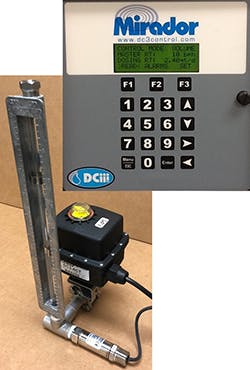DCiii Launches Mirador Chemical Injection Control And Diagnostic Module
DCiii, LLC introduces the Mirador Chemical Injection Control and Diagnostic Module that provides greater remote control and diagnostic monitoring capabilities over the chemical injection process. Operating on an open-based platform with Modbus RTU communication protocol, the Mirador integrates with sensors, communications and software to provide full operational visibility, tracking, control and analysis over chemical injection processes from a remote control station. Through a simple retrofit to existing “tank and pump” only systems, the subsystem reportedly addresses 95% of chemical injection systems that work by on/off control capacity to deliver chemical to the point of injection.
The Mirador can remotely change process configurations on dosage, calibration, temperature limits and other parameters. Constant monitoring of injection volumes ensures a more accurate chemical dosage, resulting in less wasted material from over-injection and improved product quality and performance by avoiding under-injection, according to the company.
The Mirador allows operators to directly verify and automatically recalibrate injection rates to provide for a more accurate chemical delivery. Personnel no longer need to visit sites on numerous occasions to manually calibrate the chemical injection system. As chemicals follow different dosing protocols, the Mirador helps technicians remotely maintain appropriate dosage at the desired flow rate based on changing well or process conditions.
With no requirements for third-party based communication systems, the Mirador integrates with existing SCADA systems and networks. While other chemical injection monitoring systems require that data stay in their networks, the Mirador operates on existing communication systems, eliminating potential security leaks and monthly surcharges to buy back data.





